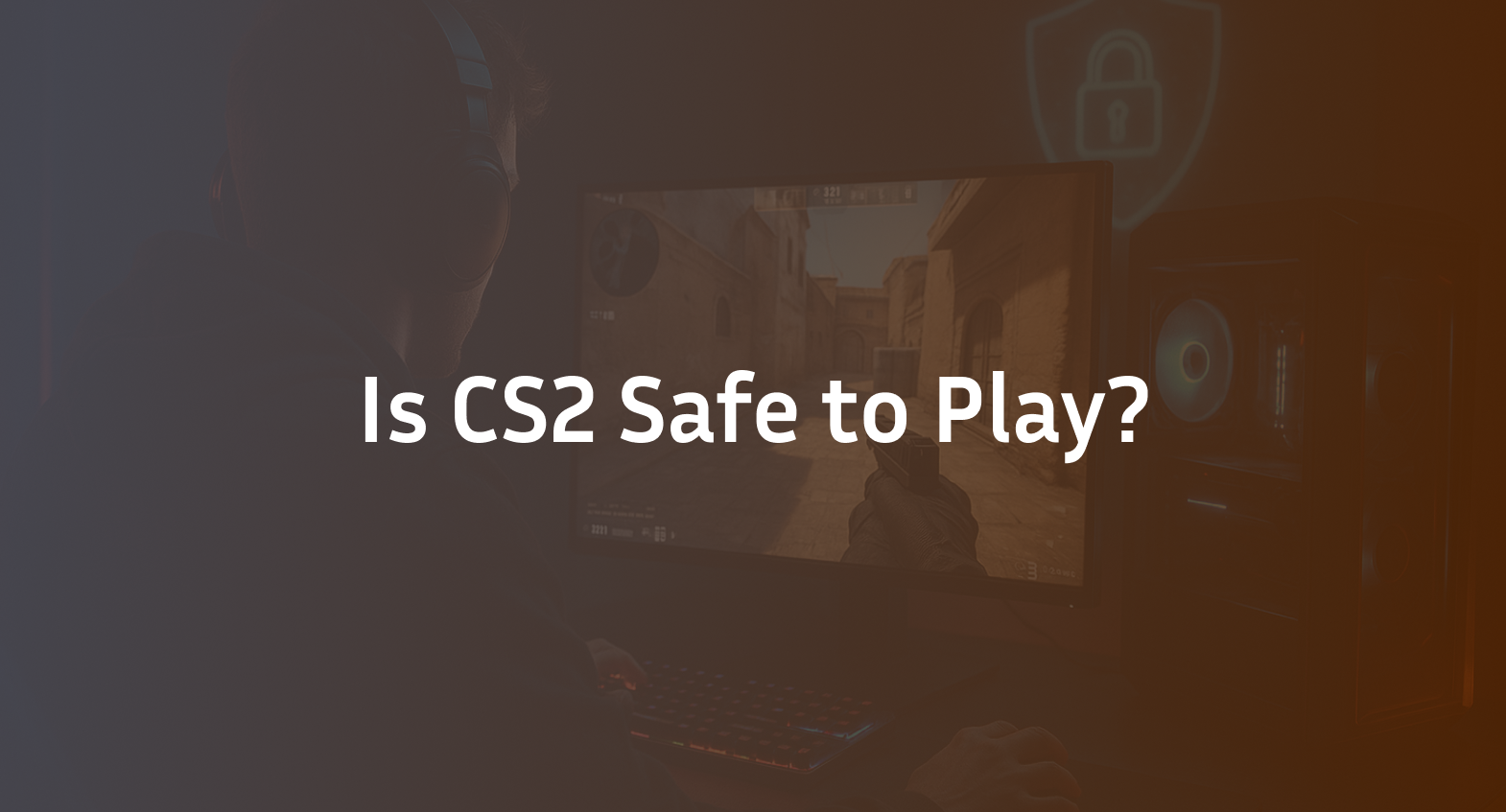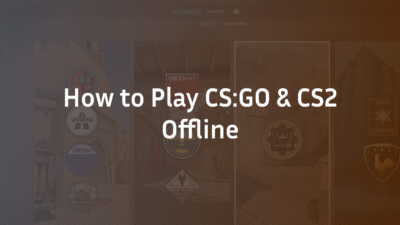Is CS2 Safe to Play in 2025? An Expert Security Analysis
The transition from CS:GO to Counter-Strike 2 (CS2) was met with immense excitement, but it also ushered in a wave of player concerns. Headlines about security exploits, rampant cheaters, and account safety have left many asking a fundamental question: is CS2 safe to play? As a veteran of the Counter-Strike franchise with years of experience analyzing game security, I understand these concerns are not just paranoia—they are valid questions demanding clear, expert answers. This guide will cut through the noise, providing a thorough, evidence-based analysis of CS2’s current security state, covering everything from remote code execution scares to the real risks of third-party downloads. We’ll separate fact from fiction, empowering you to protect your account and enjoy the game with confidence, leveraging the latest patches and security practices.
What Does “Safe to Play” Actually Mean for CS2?
Before diving into the specifics, we must define “safe.” In the context of an online game like CS2, safety encompasses three core pillars:
- Client Security: Is the game client itself a vector for malware? Can playing the game expose your PC to a remote code execution attack that compromises your entire system?
- Account & Inventory Safety: What is the risk of account theft or losing your valuable skin inventory due to phishing, scams, or false bans?
- Game Integrity: How effective is the anti-cheat? Is the matchmaking experience ruined by a high density of cheaters and hackers?
We will address each of these pillars in depth, providing a holistic view of the risk exposure any player faces when launching CS2.
Analyzing CS2’s Core Client Security: Exploits & Vulnerabilities
Upon its release, CS2, like any complex software, was not without its vulnerabilities. The community reported several critical issues, including potential IP leak vectors and concerns around UI elements that could be manipulated. The most severe historical vulnerability involved the ability for malicious actors to execute code on a victim’s machine through crafted game elements, a classic remote code execution scenario.
However, Valve’s response to these threats is the most critical part of this story. The developer has been consistently proactive in deploying patches to address these security exploit reports. The notorious XSS vulnerability that allowed for potential script injection was patched promptly. It is crucial to understand that the exploit patched is no longer a live threat on official servers. The update cycle for CS2 has been robust, demonstrating Valve’s commitment to closing security gaps as they are discovered. Therefore, while the past saw some significant risk exposure, the present state of the game client on official matchmaking servers is secure for the average player.
The Real Battle: Cheaters, Hacking, and Game Integrity
This is often the most significant pain point for players. The sub-tick system and new engine of CS2 initially provided a fresh playground for cheat developers, leading to a noticeable surge in cheaters shortly after launch. This created a perception that the game was fundamentally unsafe and unfair.
Valve’s VAC (Valve Anti-Cheat) system, combined with the newer CS2 Overwatch system, is in a constant arms race with cheat developers. While not perfect, it is a constantly evolving deterrent. Waves of bans are regularly deployed, and the system’s strength lies in its delayed, mass-ban approach, which makes it harder for cheat developers to identify what triggered the detection. The presence of cheaters is an industry-wide problem, not unique to CS2, but Valve’s systems work tirelessly to mitigate it. The experience today is significantly more stable than at launch, though vigilance is always required, especially at higher CS2 Ranks & Premier Rating tiers.
Navigating External Risks: Community Servers, Mods, and third-party Downloads
Your safety in CS2 can often depend on where you choose to play. Official servers run by Valve are generally secure, with all the latest patches and protections active. The real risk exposure increases when you venture into the world of community server risk.
- Custom/Mod Maps Risk: Downloading and playing on custom workshop maps from the Steam Workshop is generally safe, as Valve has a level of curation. However, absolutely avoid downloading any map or mod from an unverified third-party website. These files could be bundled with malware or contain malicious scripts.
- Community Servers Risk: Joining a community servers not showing list can be safe if you stick to well-known, trusted servers with established reputations. Be wary of unknown servers that promise free skins or unusual mods, as they could be fronts for phishing attempts or IP leak exploits.
- Third-Party Downloads: This is the largest threat. Never download any executable file (.exe), config generator, or cheat tool from a website promising free skins, hacks, or a CS2 dedicated server plugin you don’t trust. These are almost always malware designed for account theft or worse. Always use official channels like the Steam Workshop for any game modifications. Understanding CS2 float values and skin prices should never involve downloading external programs.
Protecting Your Account: How to Mitigate Risk and Play Safely
Your personal security hygiene is your first and best line of defense. Here’s how to fortify your account against privacy concerns and potential identity risk:
- Enable Two-Factor Authentication: This is non-negotiable. Steam’s two-factor authentication (Steam Guard) is the single most effective way to prevent account theft, even if your password is compromised.
- Use Strong, Unique Passwords: Your Steam password should be long, complex, and not used anywhere else online. This protects against data breach attempts from other sites.
- Be Wary of Phishing: Never click on links from unknown users in Steam chat or enter your login credentials on any site other than store.steampowered.com. Scammers often create fake Steam login pages to steal your credentials.
- Manage Your Privacy Settings: Adjust your Steam profile privacy to limit the amount of personal information visible to the public, mitigating privacy concerns.
- Understand Trade Security: Be extremely cautious with trade offers. Verify the items and the recipient every time. If you are trading high-value items, understanding how to check your CS2 stats and trade history is crucial. If you engage in trading, know how to find your Steam Trade URL safely and avoid sites that seem suspicious.
If you encounter an error like VAC was unable to verify, it’s usually a local connectivity issue rather than a security threat, but it’s always good to verify your game files.
Conclusion: So, Is CS2 Safe to Play?
Based on a comprehensive analysis of its current state in 2025, yes, Counter-Strike 2 is safe to play. The core game client on official Valve servers is secure, with critical historical vulnerability issues like remote code execution and XSS vulnerability having been patched. The primary remaining concerns are the perennial presence of cheaters—which Valve actively combats—and the external risks players introduce themselves by venturing into unvetted third-party downloads and shady community servers.
The key to a safe experience is informed caution. Stick to official servers and trusted servers for community play, never download cheats or unverified mods, and fortify your Steam account with two-factor authentication and a strong password. By taking these steps, you can confidently enjoy everything CS2 has to offer, from mastering CS2 Mirage Smokes to climbing the Premier CS2 leaderboards, without undue fear for your system’s or account’s security.
Ready to jump in? Ensure your settings are optimized with the best CS2 audio settings and find the perfect CS2 sensitivity to match your playstyle.
Frequently Asked Questions (FAQs)
Has CS2 had any major security exploits?
Yes, CS2 had significant security vulnerabilities at launch, including potential remote code execution and cross-site scripting (XSS) vulnerabilities. However, Valve has a strong track record of addressing these issues swiftly. All major reported exploits have been patched through subsequent game updates, making the official client secure for play.
Can I get hacked just by playing CS2 on official servers?
The risk of getting hacked simply by playing on official Valve servers is extremely low. The previously discovered critical vulnerabilities that could lead to system compromise have been patched. The primary hacking risks now come from outside the game, such as downloading malware disguised as cheats, config tools, or from unverified third-party community servers.
How common are false VAC bans in CS2?
False VAC bans are exceptionally rare. The Valve Anti-Cheat system is designed to be highly accurate, and mistakes are uncommon. The vast majority of ban appeals claiming to be false are eventually proven to be legitimate bans upon further investigation. If you avoid any third-party programs that interact with the game client, your risk of a false ban is virtually zero.
Are community servers and custom maps safe?
Community servers and custom maps can be safe, but caution is required. Only join well-known, trusted community servers with a good reputation. For custom maps, only download them from the official Steam Workshop page within Steam itself. Avoid any external websites offering custom maps or server plugins, as these are common vectors for malware.
What is the biggest security risk for a CS2 player today?
The single biggest security risk is user behavior: downloading malicious software from the internet. This includes cheat programs, fake “skin generators,” suspicious applications that promise to optimize your game or change your CS2 crosshair, and programs from unverified websites. These programs are designed to steal your Steam login credentials, hijack your account, and loot your entire inventory.
How can I make sure my account and inventory are safe?
To ensure maximum account and inventory safety, you must enable Steam Guard Mobile Authenticator (two-factor authentication), use a unique and strong password for your Steam account, and never share your login details or click on phishing links. Additionally, be extremely cautious with trade offers and API key permissions given to third-party sites.



